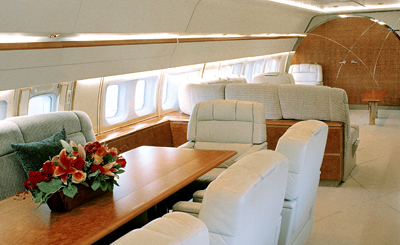INDIAN ARMED FORCES CHIEFS ON OUR RELENTLESS AND FOCUSED PUBLISHING EFFORTS

The insightful articles, inspiring narrations and analytical perspectives presented by the Editorial Team, establish an alluring connect with the reader. My compliments and best wishes to SP Guide Publications.

"Over the past 60 years, the growth of SP Guide Publications has mirrored the rising stature of Indian Navy. Its well-researched and informative magazines on Defence and Aerospace sector have served to shape an educated opinion of our military personnel, policy makers and the public alike. I wish SP's Publication team continued success, fair winds and following seas in all future endeavour!"

Since, its inception in 1964, SP Guide Publications has consistently demonstrated commitment to high-quality journalism in the aerospace and defence sectors, earning a well-deserved reputation as Asia's largest media house in this domain. I wish SP Guide Publications continued success in its pursuit of excellence.
- A leap in Indian aviation: Prime Minister Modi inaugurates Safran's Global MRO Hub in Hyderabad, Calls It a Milestone
- All about HAMMER Smart Precision Guided Weapon in India — “BEL-Safran Collaboration”
- India, Germany deepen defence ties as High Defence Committee charts ambitious plan
- True strategic autonomy will come only when our code is as indigenous as our hardware: Rajnath Singh
- EXCLUSIVE: Manish Kumar Jha speaks with Air Marshal Ashutosh Dixit, Chief of Integrated Defence Staff (CISC) at Headquarters, Integrated Defence Staff (IDS)
- Experts Speak: G20 Summit: A Sign of Global Fracture
Business Aviation: Sense & Savings

As global travel becomes increasingly tedious with all the hassles posed by elaborate security checks and airport transfers, the business jet has emerged a far more attractive option.
One of the world’s richest men knows something about business jets. When he was merely a multi-millionaire, Warren Buffet bought his first jet and immediately christened it The Indefensible, aware that the whole idea of a corporate airplane with its associate costs would have shareholders turning in the aisles at the annual general meeting. The latest Buffet purchase, a Gulfstream, has a new name. It is called The Indispensable—and the now multi-billionaire believes the use of the business jet played a key role in consolidating his business and fortune.
Earlier, Buffet had admitted it was one of his few indulgences. Subsequently, what elevated the business jet from a luxury toy to what is increasingly seen as a vital corporate tool? In the US, hundreds of Fortune 500 companies now flaunt their own aircraft, with companies arguing that this vital conveyance saves time and boosts productivity. A recent CNN report quoted David Savile, CEO of charter company Air Partner, as saying: Private jets have this appearance of being affluent and full of fat cats and celebrities. But our experience is actually the opposite. These are practical business tools and are used by lots of people. Some of the bigger private jets now in operation even have boardrooms where meetings can be conducted in-flight. With a price tag ranging from around $2 million (Rs 8 crore) for a light jet to more than $70 million (Rs 284 crore) for a larger business jet, the cost cannot always be justified. But business manufacturers and charter companies are developing more and more solutions as the rest of the world follows the American lead on business aviation.
India, with its greater number of millionaires than anywhere else in Asia and record numbers of aspiring graduates and entrepreneurs, is a potentially huge market for business aircraft makers. Options such as fractional ownership (where a buyer invests in a proportion of a plane and pays for a share of its maintenance and management) are taking hold. No surprise that the company taking the lead around the world with this idea is Netjets, owned in part by Warren Buffet, who loved the concept so much he bought the company. It is an expensive proposition, no question about it, but there are rewards in terms of control of one’s time, says former Netjets CEO Bill Boyster. Who you travel with and when you travel (is important). The privacy and security in which you travel does make (business jets) a reasonable value equation.





